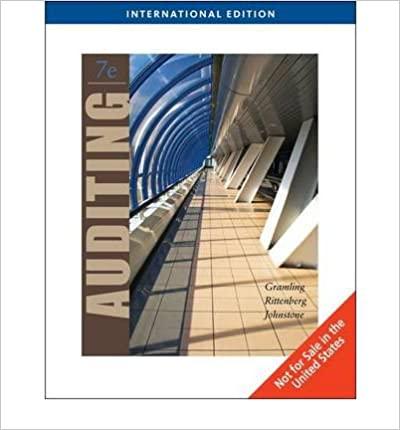Question
11. A recent audit of the current system shows users make many mistakes and there are significant operational inefficiencies that are inconsistent with system manuals
11.
A recent audit of the current system shows users make many mistakes and there are significant operational inefficiencies that are inconsistent with system manuals and documentations. Which of the following is most likely to be useful in identifying the cause of the problems
a.
user feedback and interviews, and observing the system in action by watching users
b.
analysing system documentations and talking to senior managers
c.
conducting a feasibility analysis of a new system
12. An AR clerk creates and approves a new customer that bypasses the normal credit check and gives this customer a credit line of $10,000. He then approves a sales order to the value of $9,000 by this customer. In return, he gets a commission of $500. He justifies that this customer is new and needs time to prove their creditworthiness. Further, if the customer fails to pay back, he will just write off their account as bad debt in the future. This is an example of
a.
Pressure for fraud and opportunity for fraud.
b.
Pressure for fraud and ability to justify the fraudulent action
c.
Opportunity for fraud and ability to justify the fraudulent action
13.
Which of the following statements regarding accounting systems is NOT true?
a.
Small organisations can have their needs met with a simple accounting system
b.
A complex accounting systems comprising a baseline model and add-on modules are more likely to be suitable for large organisations
c.
Mid-range accounting systems suit medium-size organisations
d.
ERP suits organisations of all sizes
14.
A company has discontinued its current business and instead acquired a business in a completely new industry. When considering a new information system for this new business, which approach of system implementation is most appropriate?
a.
Direct conversion.
b.
Parallel conversion.
c.
Phased-in conversion.
d.
None of the options is correct.
15.
What are the components of the feasibility analysis: i. Economic feasibility; ii. Schedule feasibility; iii. Legal feasibility; iv. Technical feasibility; v. Operational feasibility
a.
All of them are correct
b.
All except ii
c.
i, ii, iii and iv
d.
i, iii, iv and v
Step by Step Solution
There are 3 Steps involved in it
Step: 1

Get Instant Access to Expert-Tailored Solutions
See step-by-step solutions with expert insights and AI powered tools for academic success
Step: 2

Step: 3

Ace Your Homework with AI
Get the answers you need in no time with our AI-driven, step-by-step assistance
Get Started


